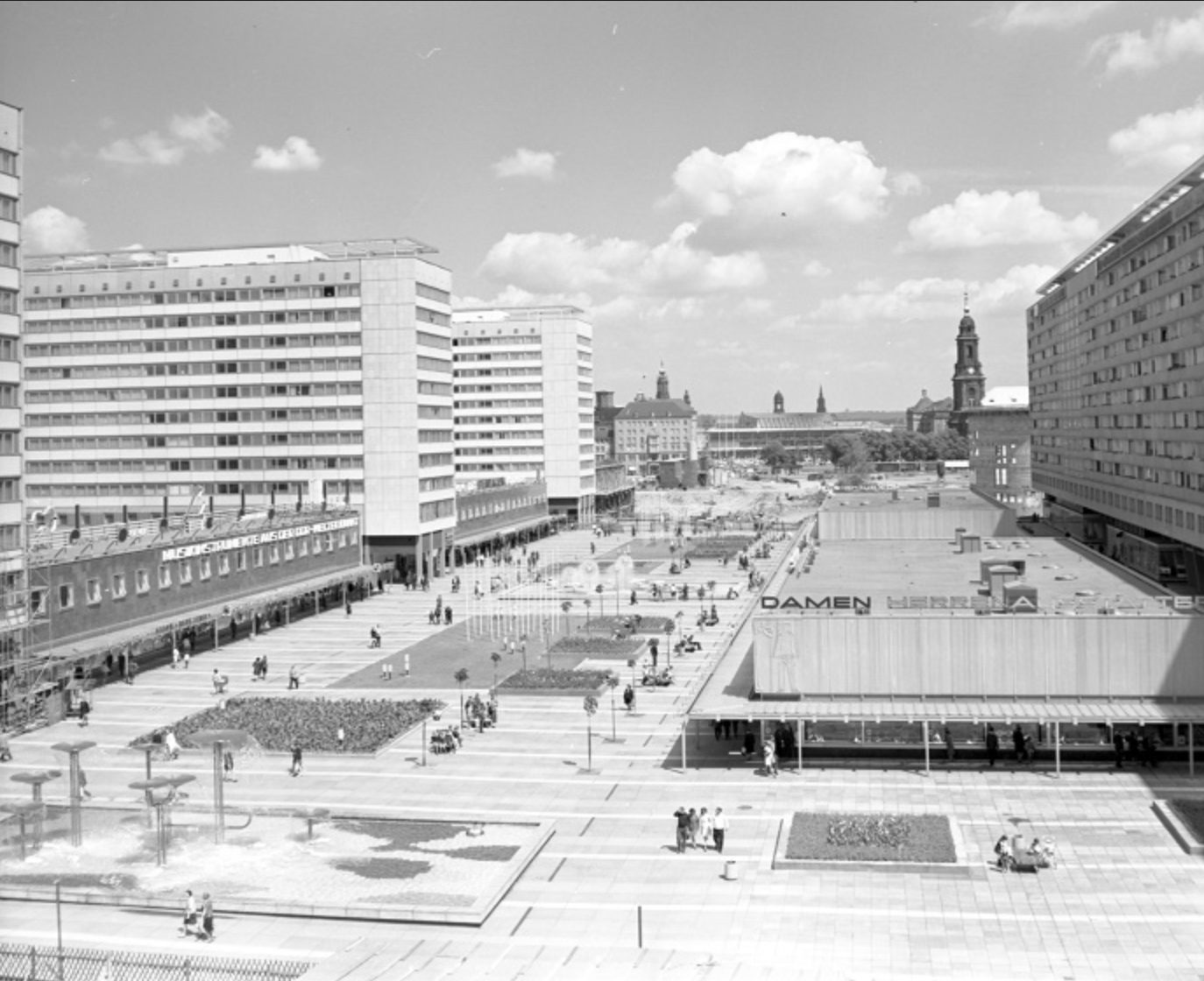Prager Strasse (Prager Strasse) seen from the Newa Hotel, 1970, anonymous photographer.
This photograph shows Prager Strasse as it was (re)built in the 1960s. Surprisingly, this street, designed as a central element of the ‘socialist city’, was inspired by Western achievements like the Lijnban in Rotterdam. The tall, streamlined blocks of buildings contained hotels for international visitors on the left-hand side and housing for local residents on the right-hand side. They stand behind the lower buildings, reserved for shops and restaurants, in a clever pattern, creating an urban composition where pedestrian space is valued. Prager Strasseis like a miniature city, the everyday setting for a happy society. Greenery and, more importantly, beautiful fountains embellish this ensemble.
In spite of their imposing size, the buildings on Prager Strasse are not menacing and do not create a hostile impression. Their facades are decorated with porcelain tiles that subtly recall the historical wealth of Dresden, a top tourist destination.
The photograph is taken from a window of the Hotel Newa near the railway station. In the background, on the right, stands the bell tower of the Kreuzkirche (church of the Holy Cross), the facades of the buildings on Altmarkt Square and the more modern Palace of Culture, built to close off the perspective of Prager Strasse.
Sonia de Puineuf

